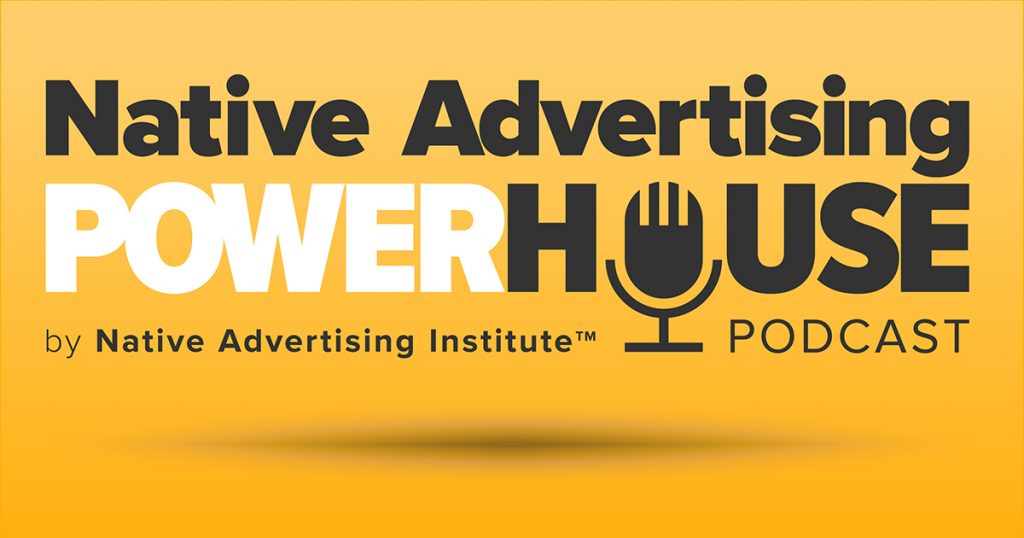 Details
Details

By Victoria Greene
Branding consultant and freelance writer
Connect
Native advertising is not new, yet as the face of digital marketing changes, this particular approach to advertising is undergoing a gradual transformation that could change the way users consume and react to online marketing in the future.
Yet, there still seems to be some CMOs and organisations out there who struggle with the concept of native advertising. What does it mean? What can it do for your brand? To build a better picture of what people want to know about native advertising, we have evaluated the most popular related searches, to gain an insight into the state of the industry.
The interest in the term ‘native advertising’ has grown exponentially over the past six years
Trending topic?
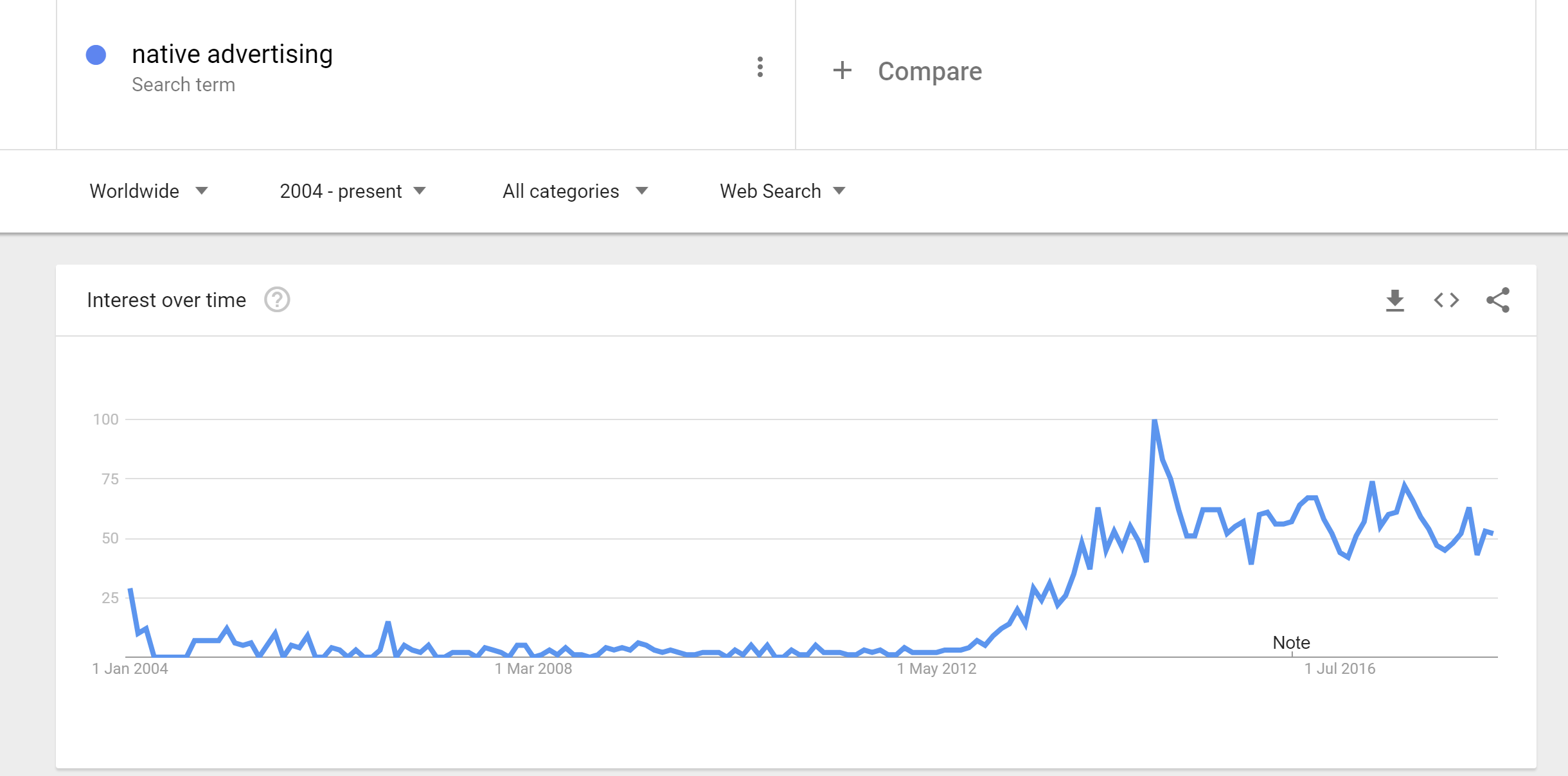
In the age of the ad blockers, native advertising has newfound potential, as by design, it is innocuous and unobtrusive, aiming to blend in with the natural content of its page.
It’s also something that users often find difficult to spot as it blends in with other forms of native content — a great opportunity for brands to establish themselves as leading lights.
RELATED: Native Advertising Is Growing at Record-Breaking Pace All Over the World
The above Google Trends graph shows how the interest in the term ‘native advertising’ has grown exponentially over the past six years, but that it also reached its peak around 2014 -2015. It seems like the term is becoming more and more part of our collective digital vocabulary.
People are really looking for ways to get under the skin of this tactic.
A lack of understanding
Something that becomes immediately apparent once you begin exploring searches on native advertising is that many aren’t clear on exactly what it is or how it works.
A quick search on Google Trends for related queries reveals an overwhelming majority of searches are focused on the definition of native advertising or examples of it in use.
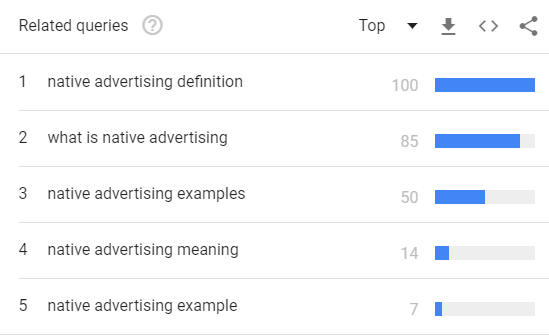
Credit: Google Trends
People are really looking for ways to get under the skin of this tactic — definitions, meanings, examples and ways to implement the advertising technique effectively.
This really speaks to the importance of building case studies and visual portfolios of native ads so that clients get a real solid picture of what a native ad looks like in practice. On both sides of the fence, communication and clarity are key.
Native advertising should be treated as a subset of the digital ecosystem of content marketing, and therefore, a strategy for content distribution.
Where does native advertising fit in?
Many professionals mistake the term native advertising for content marketing, as proven by a quick keyword search on Ubersuggest. While it should not be thought of as an interchangeable term, marketers are right in thinking that the two concepts are aligned.
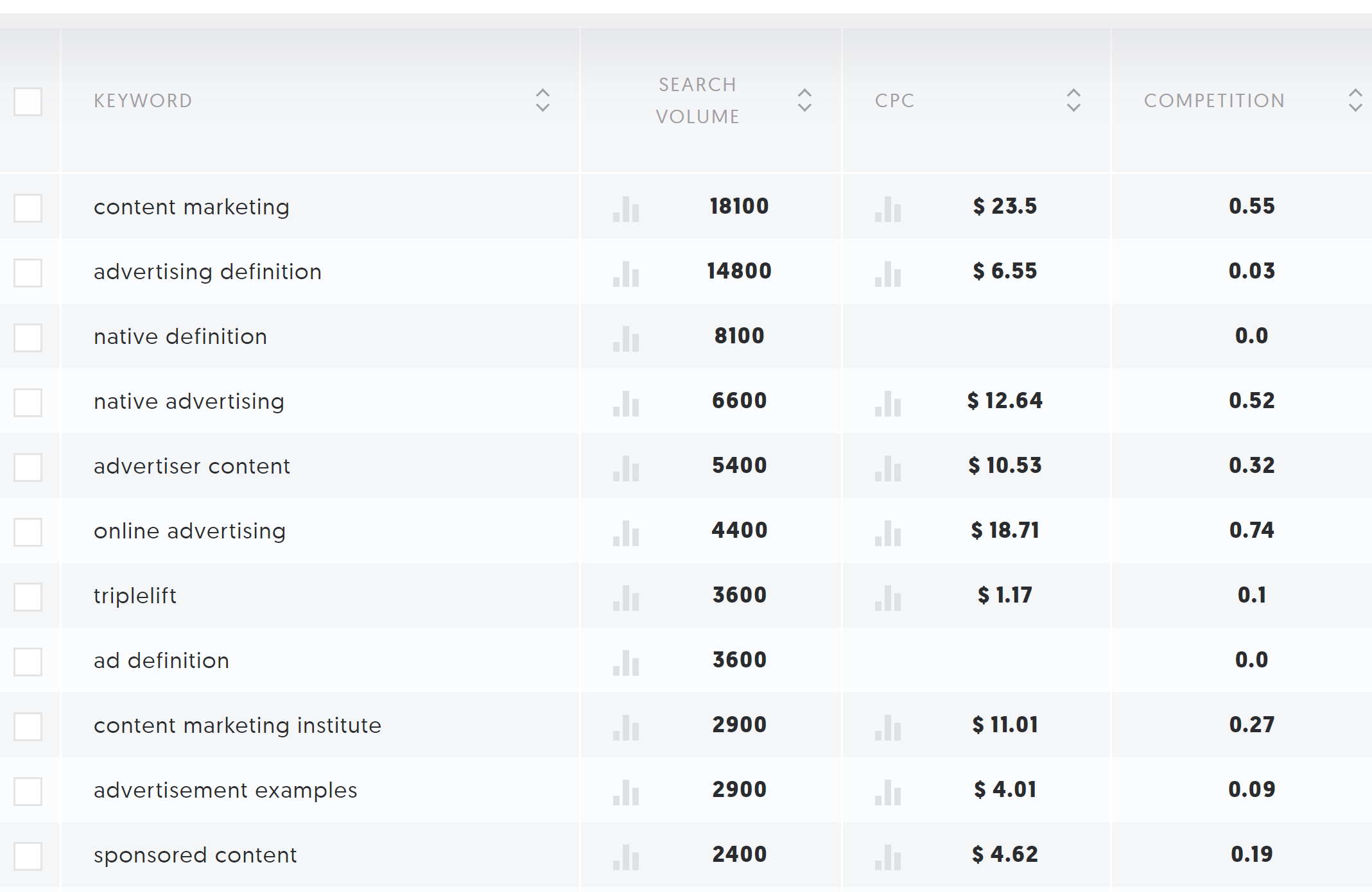
Credit: neilpatel.com
Native advertising should be treated as a subset of the digital ecosystem of content marketing, and therefore, a strategy for content distribution. Native advertising is a complex, but top-level, it can be identified by three key factors:
- A paid for opportunity: Like with other branches of content marketing, you need to pay to play. But the ad doesn’t stick out like a banner; it blends with the third-party site
- Typically content-based: The content is usually insightful and heavily targeted towards the readership, without being overly salesy or drawing direct attention to the promoted product or service
- Delivered instream: The user experience is not disrupted by the ad so that the user’s natural behaviour is not impeded
These points sound extremely similar to content marketing as a whole, and they should. But it’s the formats and means of distribution that make native advertising a branch of content marketing.
RELATED: "When Everybody's Doing Perfect Content, Distribution Is King"
For example, while native ads can include in-feed units, promoted listings, paid search ads, and recommended widgets, content marketing focuses on the wider marketing strategy; that is, how an organisation can attract and retain a defined audience through creating and distributing content.
It’s important that the industry manages this conversation around native advertising, sponsored content, and content marketing with finesse to help tease out the differences.
Being uncertain about this matter once again points to a general lack of understanding with regards to the purpose and format of native advertising.
Will it work?
Another common question that comes up is whether native advertising is effective. There are many facets to this question, but overall, being uncertain about this matter once again points to a general lack of understanding with regards to the purpose and format of native advertising.
This is where detailed data and in-depth reviews of native ad strategies will help marketers partner with more and more brands. We all know that the data is overwhelmingly on the side of native content and ads, but it’s about communicating this to people en-masse.
RELATED: Native Advertising That Works? 3 Takeaways from Award-Winning Examples
People are familiar with content marketing funnels, but maybe less so with the mechanics of ‘going native’. We have to ensure that people can see beyond the jargon and hype to the tangible results.
As GDPR is set to wreak havoc in industries like ecommerce, native advertising, as opposed to direct marketing, will become an increasingly compelling and useful sales tactic.
If your native ads are responsive, visually appealing, and add value to the pages hosting them, then they can be a significant asset to your marketing campaign.
A question of ethics
Once you get past the questions about what native advertising is, you begin to find further questions discussing whether it is ethical to use this form of marketing. This, for the most part, arises from the underhand practice of some companies hiding advertisements in plain sight, by formatting them in line with the existing aesthetic of the host site.
In the past, native advertising had been used to manipulate search results until Google began to penalise companies who abused this form of marketing. However, while native adverts typically mimic the style of the website, there should always be some indication that they are paid for, and this transparency is something users appreciate, particularly in 2018.
As with all forms of marketing, and particularly your SEO efforts, it is simply a matter of keeping up with best practices, and not attempting to game the system. If your native ads are responsive, visually appealing, and add value to the pages hosting them, then they can be a significant asset to your marketing campaign.

Credit: Telegraph
While many web users are deterred by what they perceive to be clandestine ads, they are still willing to act upon well-targeted advertising, providing it is not misleading or obtrusive. In fact, some research suggests that clear labelling can increase reader appreciation.
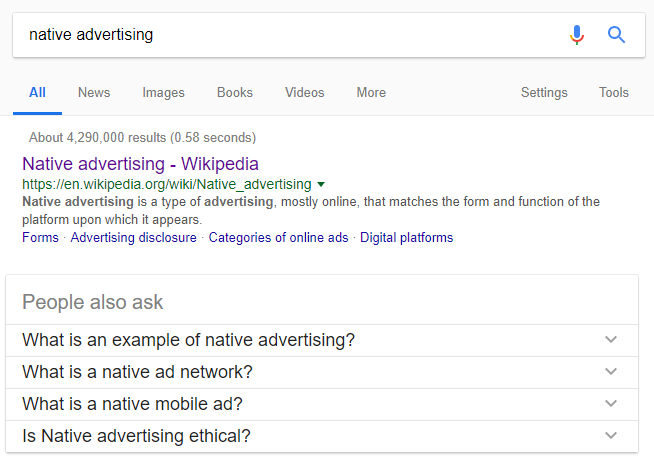
Credit: Google
Marketing professionals are keen to know how to optimise their native ads for mobile in a seamless way.
Networks and mobile ads
The above search also shows that organisations are not only confused by the definition of native advertising and its ethics but also the means of displaying these ads.
Native ad networks are, in short, like any other advertising network, that aim to unite publishers and advertisers. They are a powerful component of monetising a website and driving engagement. Some key providers include Revcontent, Redirect.com, and Nativo. Due to the high number of searches surrounded this topic, it’s clear to see that marketers are hungry for more education on the subject.
RELATED: 7 Mobile Native Advertising Trends to Watch for in 2018
A quick Google search on native advertising also reveals that marketing professionals are keen to know how to optimise their native ads for mobile in a seamless way. With businesses reporting over 56% of traffic coming from mobile, it’s unsurprising that native mobile ads are a hot topic of conversation.
Native mobile ads can take the form of in-app advertisements, which requires a different approach regarding search optimisation when compared to ads on Google or social platforms. Plus, there are app algorithms and the format of the mobile ads to take into consideration — a complex minefield to navigate if you’re new to native advertising.
Now is the perfect time to begin exploring this aspect of marketing, if you haven’t already.
Get ahead of the competition
While it is clear that the state of native advertising is currently in flux, as marketers wrestle with the how’s and why’s of its implementation. Nevertheless, with the ever more competitive nature of digital marketing, combined with Google’s new approach to handling intrusive ads, advertisers will need to rethink their strategy if they want to stay ahead of the competition.
As more people bring themselves up to speed with these changes, it is likely that native advertising will see a surge in popularity. When done well, it can be extremely effective, unobtrusive, and even directly useful to its target audience.
Now is the perfect time to begin exploring this aspect of marketing, if you haven’t already. After all, it is wise to have as many strings to your bow as possible, so while you shouldn’t seek to replace your existing campaign with a native alternative, it is certainly worthwhile exploring the viability of integrating native ads into your existing strategy.
